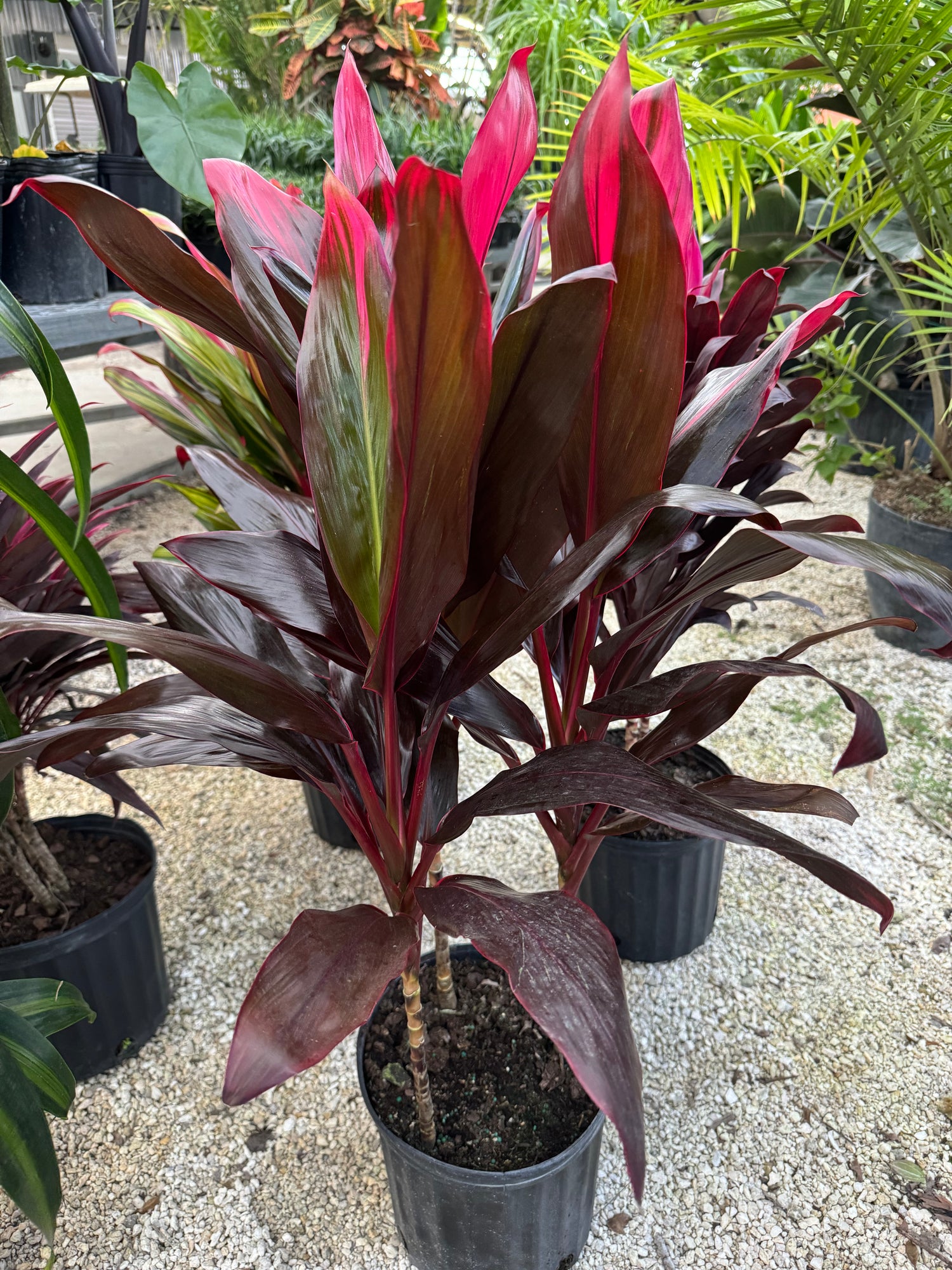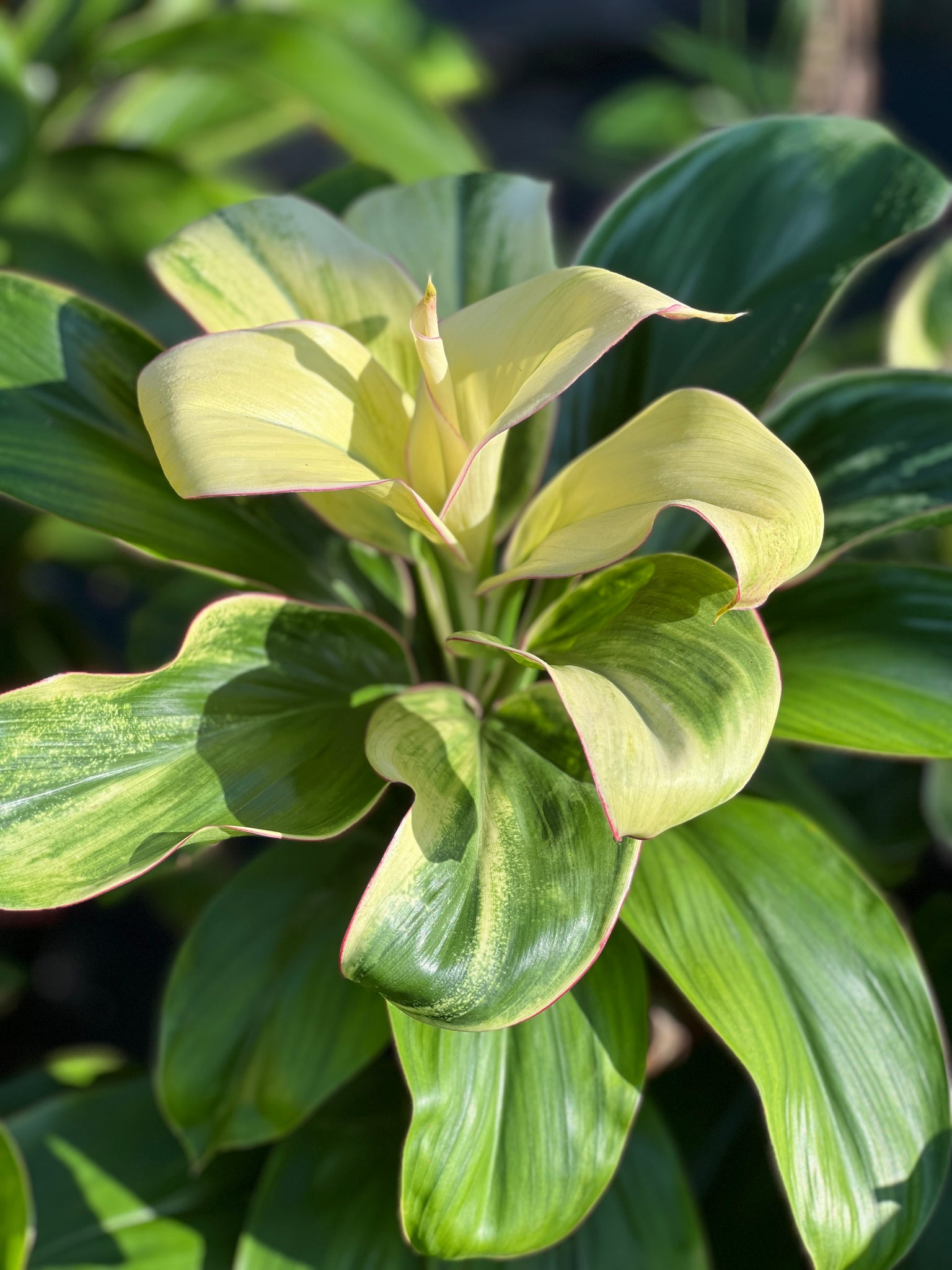The Cordyline fruticosa, often referred to as the Ti plant or Palm Lily, is a captivating evergreen shrub native to tropical Southeast Asia, Australia, and the Pacific Islands. Renowned for its striking foliage and cultural significance, this plant has become a popular choice for both indoor and outdoor settings.
Physical Characteristics
The Cordyline fruticosa is a versatile plant that can exhibit a wide range of growth habits. It can grow as a compact shrub or a tall, tree-like specimen, depending on the variety and growing conditions. The plant’s most distinctive feature is its foliage, which comes in a dazzling array of colors, including green, red, purple, and variegated combinations.
Leaf Variations

The leaves of the Cordyline fruticosa are typically long, slender, and lance-shaped. They emerge from the top of the stem in a spiral arrangement, creating a dramatic and eye-catching display. The color and size of the leaves can vary significantly depending on the cultivar. Some popular cultivars include:
Red Sister: Known for its vibrant red and pink foliage.
Light Requirements
The Cordyline fruticosa thrives in bright, indirect light. While it can tolerate some shade, optimal growth and vibrant coloration are achieved with ample sunlight. However, avoid exposing the plant to direct, intense sunlight, as this can scorch the leaves.
Watering Needs

Proper watering is crucial for the health of the Cordyline fruticosa. The plant prefers consistently moist soil but dislikes soggy conditions. Allow the top inch of soil to dry out slightly between waterings. During the winter months, reduce watering frequency to prevent root rot.
Soil and Fertilizer
The Cordyline fruticosa prefers well-draining, fertile soil. A well-balanced, slow-release fertilizer can be applied during the growing season to promote healthy growth and vibrant foliage. Avoid over-fertilizing, as this can lead to nutrient burn.
Temperature and Humidity
As a tropical plant, the Cordyline fruticosa thrives in warm temperatures. It prefers temperatures between 65°F and 80°F (18°C and 27°C). High humidity levels are also beneficial, especially for indoor plants. Misting the foliage regularly or using a humidifier can help maintain optimal humidity.
Propagation
The Cordyline fruticosa can be propagated through stem cuttings or division. Stem cuttings are the most common method. Simply cut a healthy stem section with several leaves, remove the lower leaves, and insert the cutting into a well-draining potting mix. Keep the cutting moist and in a warm, humid environment until it roots.

Symbolism and Mythology
The Cordyline fruticosa holds significant cultural importance in many Pacific Island cultures. It is often associated with spirituality, healing, and protection. In Hawaiian culture, the plant is used in traditional ceremonies and is believed to have the power to ward off evil spirits.
Traditional Uses
In addition to its ornamental value, the Cordyline fruticosa has various traditional uses. The leaves of the plant can be used to make skirts, mats, and other handicrafts. The roots and young shoots are edible and have been used as a food source in some cultures. The plant also has medicinal properties and has been used to treat various ailments.
Modern Applications
In modern times, the Cordyline fruticosa is primarily cultivated as an ornamental plant. Its striking foliage and versatility make it a popular choice for home and garden landscapes. It can be used as a houseplant, a patio plant, or a landscape accent. The plant’s ability to thrive in low-light conditions makes it suitable for indoor environments.

Mealybugs
Mealybugs are common pests that can infest the Cordyline fruticosa. These small, white insects suck sap from the plant, causing stunted growth and yellowing leaves. To control mealybugs, use insecticidal soap or neem oil.
Scale Insects
Scale insects are another common pest that can attack the Cordyline fruticosa. These insects attach themselves to the plant’s stems and leaves, forming hard, scale-like coverings. To remove scale insects, scrape them off with a toothbrush or use horticultural oil.
Root Rot
Overwatering can lead to root rot, a fungal disease that can kill the Cordyline fruticosa. To prevent root rot, ensure the plant is planted in well-draining soil and avoid overwatering.

The Cordyline fruticosa is a stunning and versatile plant that offers a wide range of benefits. Its striking foliage, cultural significance, and adaptability make it a popular choice for gardeners and plant enthusiasts alike. By following the proper care guidelines, you can enjoy the beauty of this magnificent plant for years to come.
Cordyline Fruticosa Plant
